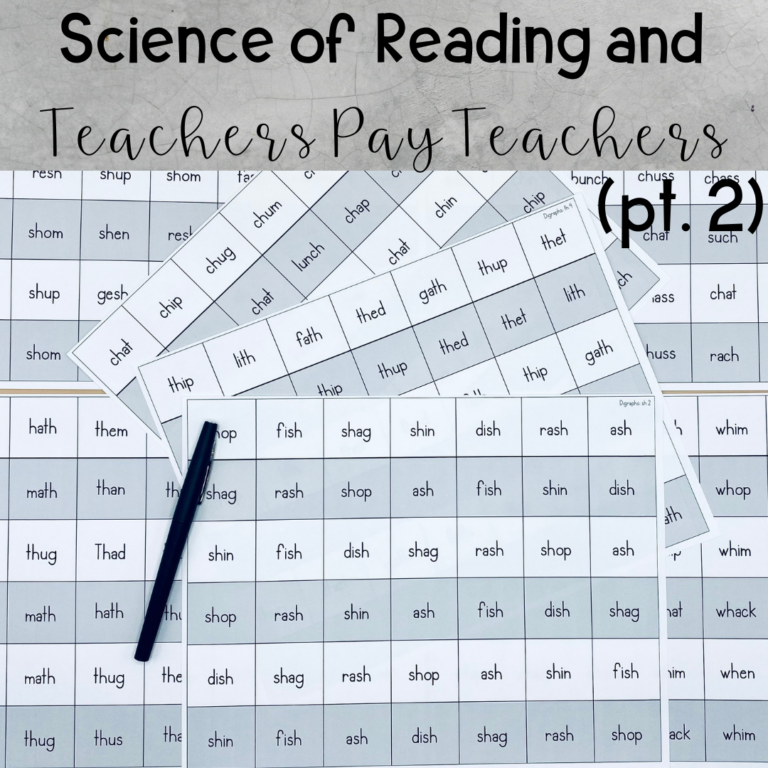
Share This:
There’s a lot of consistency in my lesson plans: each day we are reading and spelling. But the truth is, sometimes doing the same thing over and over daily can get boring. How do we maintain engagement while still keeping the integrity of our instructional focus?
Today, I want to share ideas to do just that. These ideas will be simple and need very little prep for the teacher. While glow parties and superhero days are a lot of fun, they require a lot of organization and extra time on the teacher. If it isn’t easy, I simply can’t maintain it. So while none of the ideas below will be groundbreaking, I hope they will help you vary your instruction for your students to maintain that critical engagement piece.
This is the strategy I use most often. Let’s face it—having to write on paper in the same way every single day can be incredible boring. The easiest way to increase engagement is to change the way we ask students to write for us.
Here’s a few ideas for different writing mediums: sentence strips, dry erase boards, using the table with dry erase markers, magnetic letters, “boogie” boards*, Elkonin boxes, or chart paper. Seriously, you wouldn’t believe the excitement kids get over getting to use some chart paper.
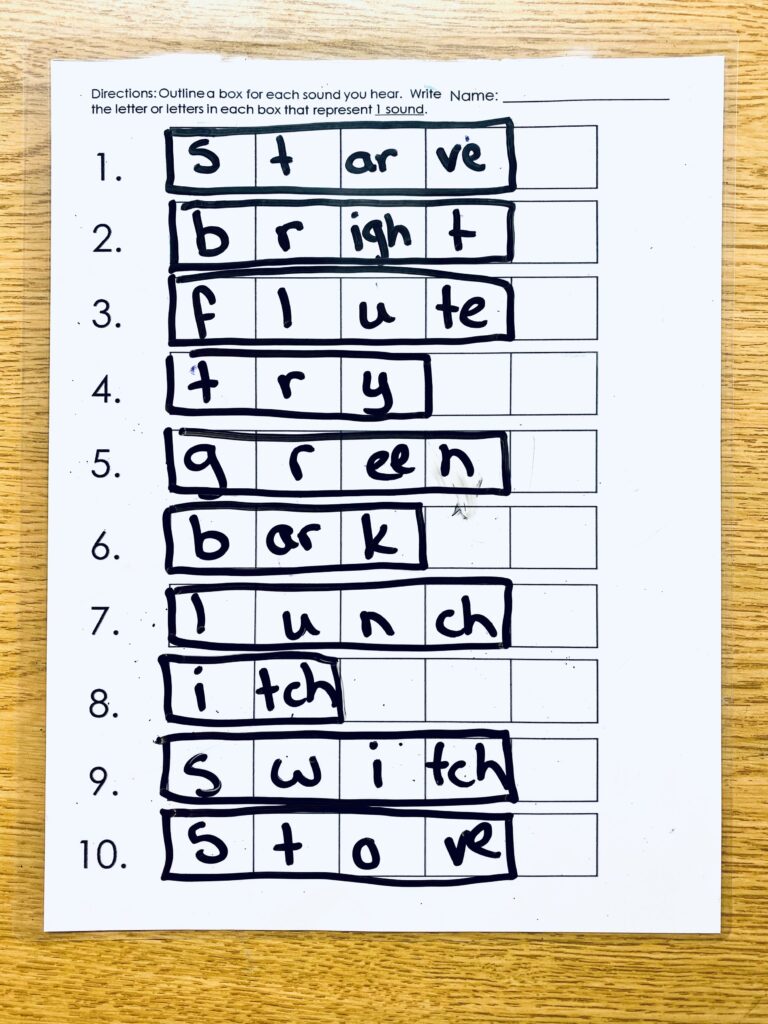
A note about dry erase markers: I prefer ultra fine tip. I find that when children use the normal-sized dry erase markers, they struggle to get proper letter formation. The tip is so thick that their formation tends to bleed into other parts of the letter. Ultra-fine is the way to go!
Just remember that children must learn how to write and spell on paper, so each week we need to be doing just that!
Give a kid a pencil and he will do the work because you told them to (most of the time). Give a kid a marker and they will do the work because all of a sudden they have a cool utensil to help do the work. Give a kid a racecar pen and now this class is fun. Just ask my first graders from last week.
I will often allow my children to use something other than a pencil to write. While the majority of the time we do just put pencil to paper, each week I’ll allow them to use a different kind of writing utensil.
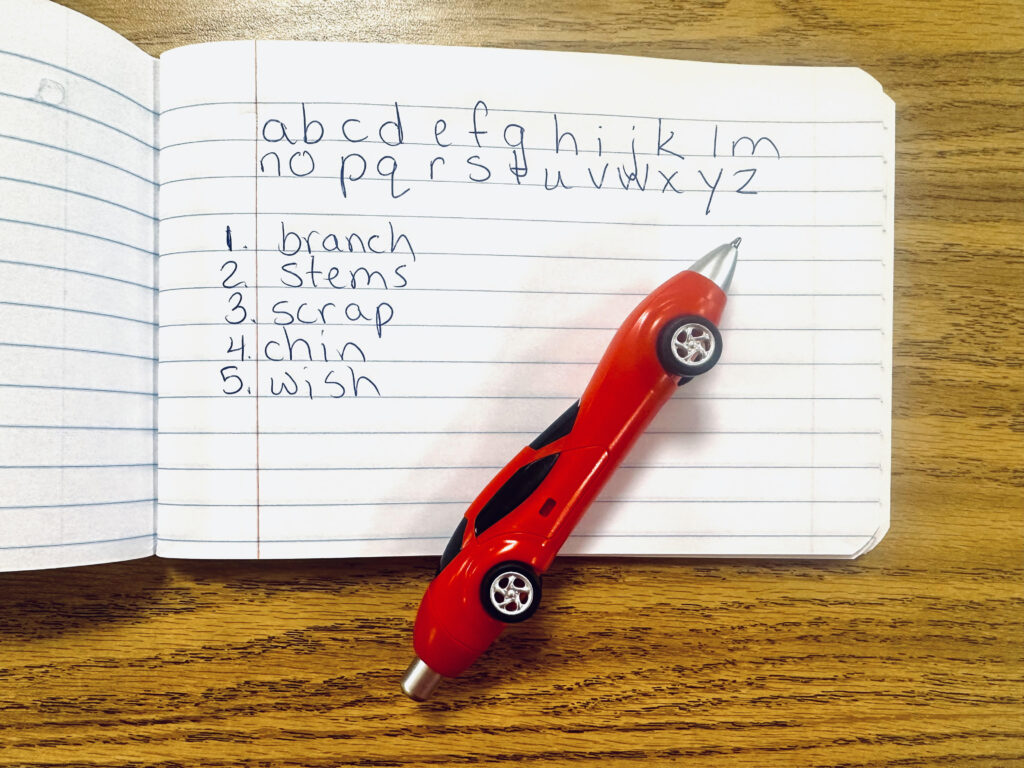
Here’s a few ideas for different writing utensils: spy pens, racecar pens, markers, crayons, paint (if you’re brave, not me), colored pencils, or anything else you can think of!
When my students are writing a dictated sentence, I will take a look at their sentence after they have finished writing it. I put a check over every part they did right (ensuring that everyone gets at LEAST one check even if it is just for writing on the line). You WOULD NOT believe how excited they get to count up their checks.
If everything is perfect, I add a smiley face and maybe a sticker.
Immediate corrective feedback is given in a way that still honors children, and you’ve got kids who are engaged with their writing. Win. Win.
An easy way to make writing more fun is to gamify it, without having to buy an actual game. There’s a few ways I do this.
One way can be to set a timer. In the past, I’ve set a timer for 5 minutes and challenged the group to see how many words we could spell in that time (all kiddos write, we do one word at a time, and we confirm correct spelling before moving to the next word). Then, every day for the rest of the week, we see if we can spell more words correctly in that 5 minutes.
Another challenge could be to put students in groups and see how many words they can write as partners. I will give them a grapheme like ai, then ask them to write as many words as they can with their partners in 5 minutes. The group that writes the most words correctly in 5 minutes are the winner!
I’ve heard of teachers who encourage their students to bring flashlights and then everyone cuddles under desks and uses their flashlights and blankets to read. I love it. But it’s an ordeal and not something that I could manage regularly.
But you know what I can manage once a week or so? Finger flashlights! These tiny flashlights are cheap and give my students the opportunity to read with the lights off. They LOVE having this opportunity.
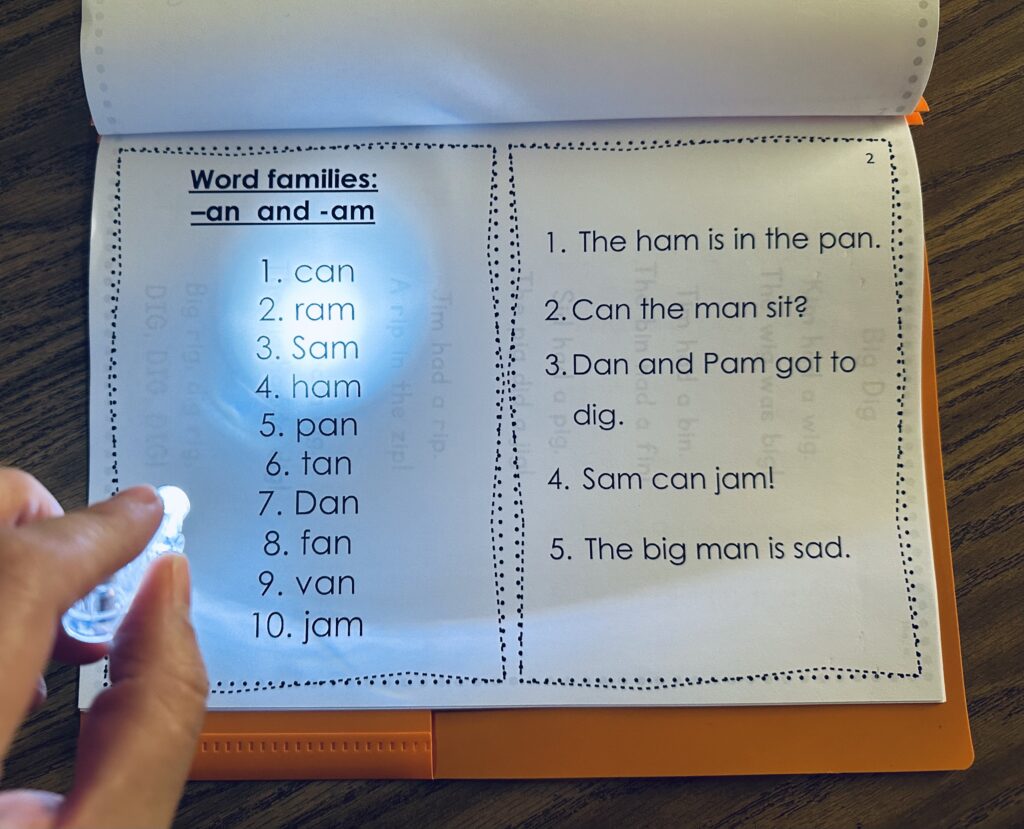
One caveat about these is that the rubber band easily comes off and kiddos will sometimes struggle to put it back on. I think it is just as easy to give it to them without the finger band and just have them hold it!
Got bored kids? Have them all start in their original spot. Then, gradually allow students to move around the room to a spot that is cozy for them. You can use carpet squares, let them sit under the desk, surf seats, whatever you want.
I told you these ideas wouldn’t be groundbreaking, but there’s nothing like a little around the room reading to get student engagement up.
I’ve been using decodable folders for a few years now. When I first started having my students use decodable folders for new reads and rereading, it got boring. Fast. I mean, I wouldn’t want to simply reread the same story over and over again—would you?
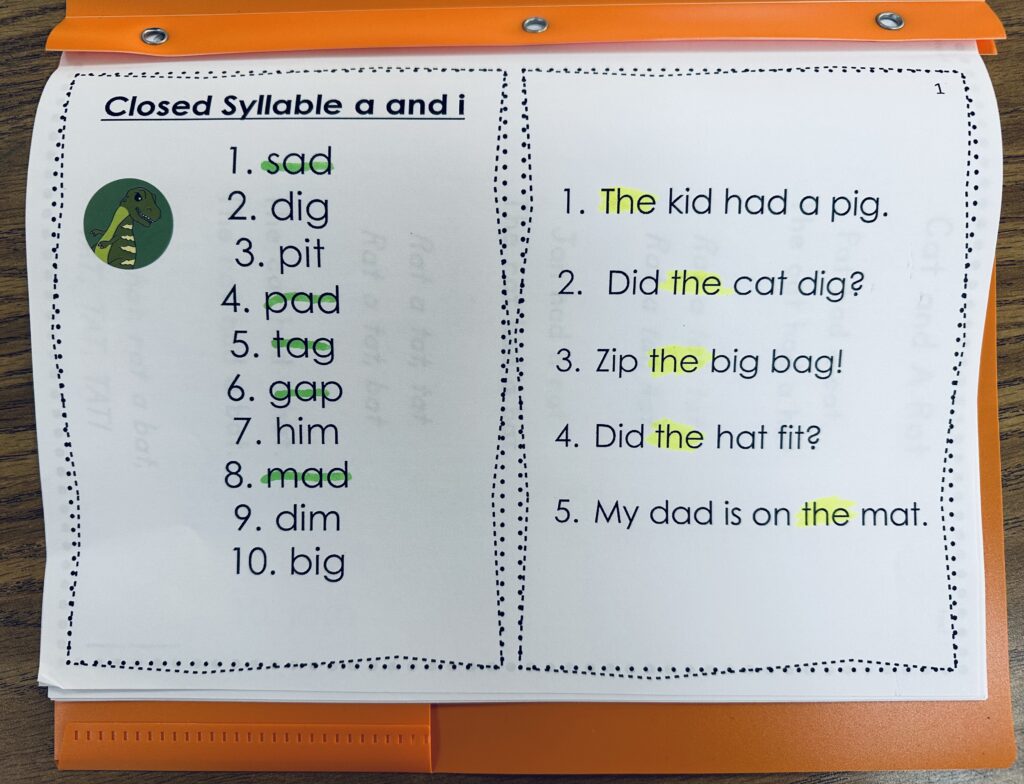
Oh, how thankful I am for stickers. I decided to give my students a sticker each time they read a passage from the folder. Then, once they have read it five times, that one will be “retired.” It doesn’t mean they can’t continue reading it, but I encourage them to read other things. This also helps with management because after a couple months I will send all the 5+ sticker passages home.
Stickers are instant engagement. Almost always. If you use smelly stickers you become next-level teacher.
Sometimes when the weeks have been long, you just need to play a game. Phonics games are a great way to end a very chaotic week. The kids get time to be kids, but you also get some instructional value out of the activity.
I love using these phonics boardgames I made for a few reasons. First, they don’t take long to play. When I’m working with kids in small group, a 5 minute game is a perfect amount of time. Second, although there are 26 games, they are all played the same way. That means I don’t have to spend time when I introduce a new game.
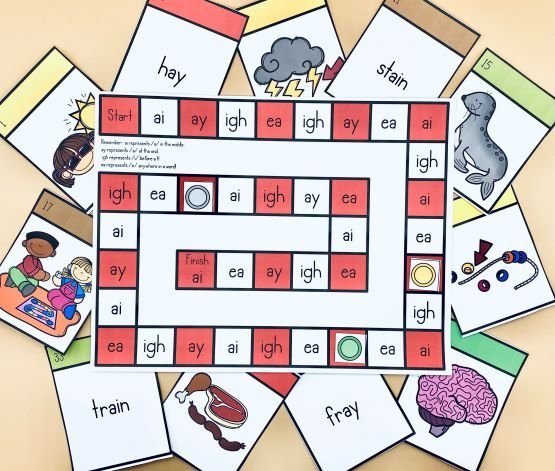
One note of caution: I stay away from sight word games. I find that most of them just ask kids to memorize words, and we know that simply isn’t how we want our kids to approach reading.
When we really think about how much time children have to work with peers, it isn’t all that much. Allowing children to do work with someone is an easy way to increase engagement, as well as a way to let children have feedback from someone other than you.
When kids are doing partner reading, we want to make sure they are reading. But also, they’re kids. So if I see kids who spend a minute chatting before they get started, I don’t sweat it. Because let’s face it, when was the last time we partnered up at a staff meeting and immediately got to work on the icebreaker challenge set before us?
We don’t need elaborate rituals to keep kids engaged. With a few simple tools, we can easily keep our students engaged, without sacrificing instructional time. I hope you try a few of these this week with your own students!
*As an Amazon affiliate, I may earn a small commission for purchases made through my links (at no additional cost to you). Your support helps fuel my content creation. Thank you for shopping and discovering amazing new resources with me. Also, I would never share anything that I don’t believe in with every part of me!
Share This:

Savannah Campbell is a K-5 reading specialist. She has taught her entire 12-year teaching career at the school she went to as a child. She holds two master’s degrees in education from the College of William and Mary. Savannah is both Orton-Gillingham and LETRS trained. Her greatest hope in life is to allow all children to live the life they want by helping them to become literate individuals.

Savannah Campbell is a K-5 reading specialist. She has taught her entire 12-year teaching career at the school she went to as a child. She holds two master’s degrees in education from the College of William and Mary. Savannah is both Orton-Gillingham and LETRS trained. Her greatest hope in life is to allow all children to live the life they want by helping them to become literate individuals.
Feeling overwhelmed with all the terminology out there? Want to know the key terms all teachers need to teach phonics? In this FREE Rules of English cheat sheet, you get a 5 page pdf that takes you through the most important terms for understanding English—you’ll learn about digraphs, blends, syllable types, syllable divisions, and move. Grab today and take the stress out of your phonics prep!
